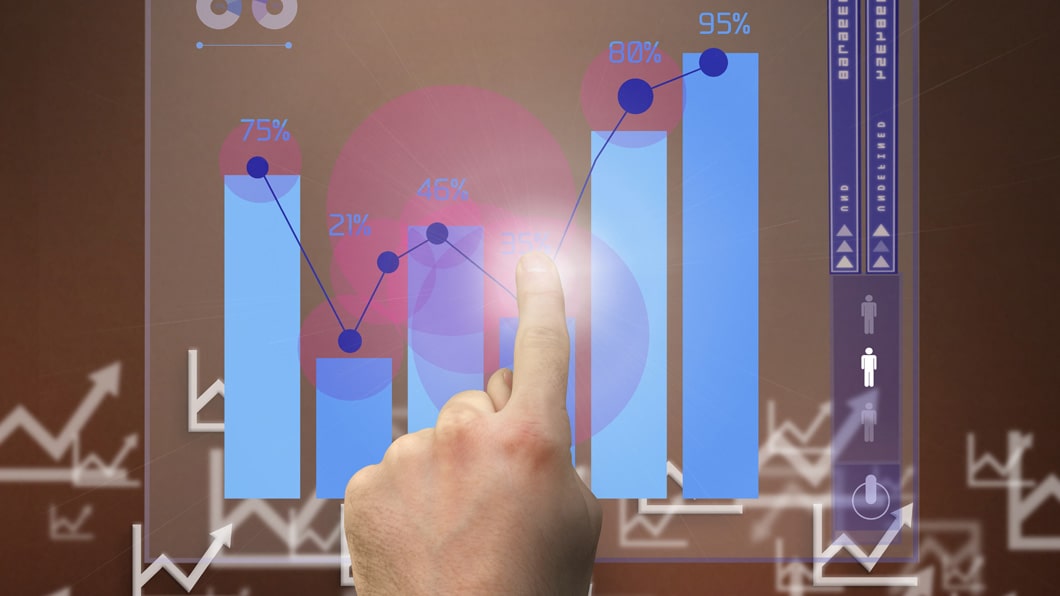
Navigating the Big Data
Introduction
In today’s data-driven world, information is not just power; it’s the lifeblood of businesses. The ability to collect, process, and derive meaningful insights from vast amounts of data is a game-changer for IT companies. This blog explores the world of big data and analytics, shedding light on how IT companies can harness these technologies to gain insights, make informed decisions, and drive business growth.
The Concept of Big Data and Its Three Vs
Before delving into the world of analytics, it’s essential to understand the concept of big data and its defining characteristics, often referred to as the three Vs:
- Volume: Big data involves large and diverse datasets, often exceeding the capabilities of traditional data processing systems. These datasets can range from terabytes to petabytes and beyond.
- Velocity: Data is generated and updated at an unprecedented speed. Think of social media feeds, IoT devices, and real-time financial transactions; all produce data that must be processed rapidly.
- Variety: Data comes in various formats, including structured (like databases), semi-structured (like JSON and XML), and unstructured (like text and multimedia). Big data analytics must handle this diversity.
The Importance of Data Analytics in Decision-Making

Data alone is meaningless without analysis. That’s where data analytics comes into play. IT companies can utilize data analytics to:
- Gain Insights: Analytics uncovers hidden patterns, trends, and correlations within data, providing valuable insights into customer behavior, market dynamics, and operational efficiency.
- Optimize Operations: By analyzing data, IT companies can optimize their processes, reduce inefficiencies, and allocate resources more effectively.
- Make Data-Driven Decisions: Analytics empowers decision-makers with factual, data-backed insights, reducing reliance on gut feelings and guesswork.
- Enhance Customer Experiences: Personalized experiences and recommendations can be created based on data analysis, improving customer satisfaction.
Real-World Examples of Big Data and Analytics in Action
Big data analytics has already made a substantial impact across industries. Here are some real-world examples:
- Healthcare: Predictive analytics is used to forecast disease outbreaks, and patient data is analyzed for early diagnosis and treatment.
- Retail: Recommendation engines like those used by Amazon and Netflix leverage big data analytics to suggest products or content based on user behavior.
- Finance: Fraud detection systems analyze transaction data in real-time to identify suspicious activities and prevent fraud.
- Manufacturing: IoT sensors in factories collect data for predictive maintenance, minimizing downtime and reducing costs.
Emerging Trends in Big Data and Analytics
The field of big data and analytics is continually evolving. Here are some emerging trends to watch:
- Edge Analytics: Analyzing data closer to its source (at the edge) to reduce latency and make real-time decisions.
- AI-Driven Insights: Leveraging artificial intelligence and machine learning to discover deeper insights from data automatically.
- Data Privacy and Ethics: As data collection grows, issues related to privacy, security, and ethical data usage are becoming increasingly important.
How IT Companies Can Set Up Effective Data Analytics Processes
Setting up effective data analytics processes involves several steps:
- Data Collection and Integration: Gather and integrate data from various sources into a centralized repository.
- Data Cleaning and Preparation: Ensure data quality by cleaning and transforming it for analysis.
- Choosing the Right Tools: Select analytics tools and platforms that align with your company’s needs and goals.
- Hiring and Training: Employ data analysts and data scientists with the necessary skills, or provide training to existing staff.
- Define Objectives: Clearly define the objectives and questions you want to answer through analytics.
- Data Visualization: Use data visualization techniques to communicate findings effectively.
Conclusion

In conclusion, big data and analytics are not just buzzwords but essential tools for IT companies looking to gain a competitive edge. By understanding the nature of big data, harnessing analytics, and keeping an eye on emerging trends, your IT company can unlock the power of data to make informed decisions, optimize processes, and drive business growth in the data-centric age.
Frequently Asked Questions (FAQs)
1. What is big data, and how is it different from traditional data?
Big data refers to extremely large and complex datasets that are beyond the capabilities of traditional data processing methods. It is characterized by its three Vs: volume, velocity, and variety. Big data often includes structured, semi-structured, and unstructured data, making it more challenging to analyze compared to traditional, structured data commonly found in relational databases.
2. Why is big data analytics important for IT companies?
Big data analytics empowers IT companies to gain valuable insights from vast amounts of data. These insights can be used to optimize operations, enhance customer experiences, make data-driven decisions, and stay competitive in the market.
3. Can you provide examples of how big data analytics is used in different industries?
Certainly! In healthcare, it’s used for disease prediction and early diagnosis. In retail, recommendation engines use it to suggest products to customers. In finance, it’s employed for fraud detection, and in manufacturing, IoT sensors use it for predictive maintenance.
4. What are the emerging trends in big data and analytics?
Some emerging trends include edge analytics for real-time data processing, AI-driven insights for automated discovery, and a growing focus on data privacy and ethics due to increased data collection.
5. How can IT companies set up effective data analytics processes?
Effective data analytics processes involve data collection and integration, data cleaning and preparation, choosing the right tools and platforms, hiring and training data professionals, defining clear objectives, and using data visualization techniques to communicate findings effectively.
6. Are there any privacy concerns related to big data analytics?
Yes, privacy concerns are significant in big data analytics. The collection and use of vast amounts of personal data raise ethical and legal issues. IT companies must be mindful of data privacy regulations and ensure the secure handling of sensitive information.
7. What are the advantages of real-time analytics (edge analytics)?
Real-time analytics, often referred to as edge analytics, can provide instant insights and decision-making capabilities. It reduces latency, making it ideal for applications like autonomous vehicles, industrial automation, and IoT devices that require rapid response times.
8. How can small and medium-sized IT companies implement big data analytics on a budget?
Small and medium-sized IT companies can start by focusing on specific use cases and gradually scaling their analytics initiatives. They can also explore cloud-based analytics platforms and open-source tools, which often offer cost-effective solutions.
9. Is big data analytics only for large enterprises, or can smaller companies benefit too?
Big data analytics is not limited to large enterprises. Smaller companies can benefit by leveraging analytics to gain insights into their operations, customers, and markets, allowing them to make informed decisions and compete effectively in their respective industries.
10. What skills are essential for data professionals in the field of big data analytics?
Data professionals in big data analytics should have expertise in data processing, programming (e.g., Python, R), data visualization, statistical analysis, and knowledge of machine learning and AI techniques. Additionally, strong problem-solving and communication skills are valuable in this field.














